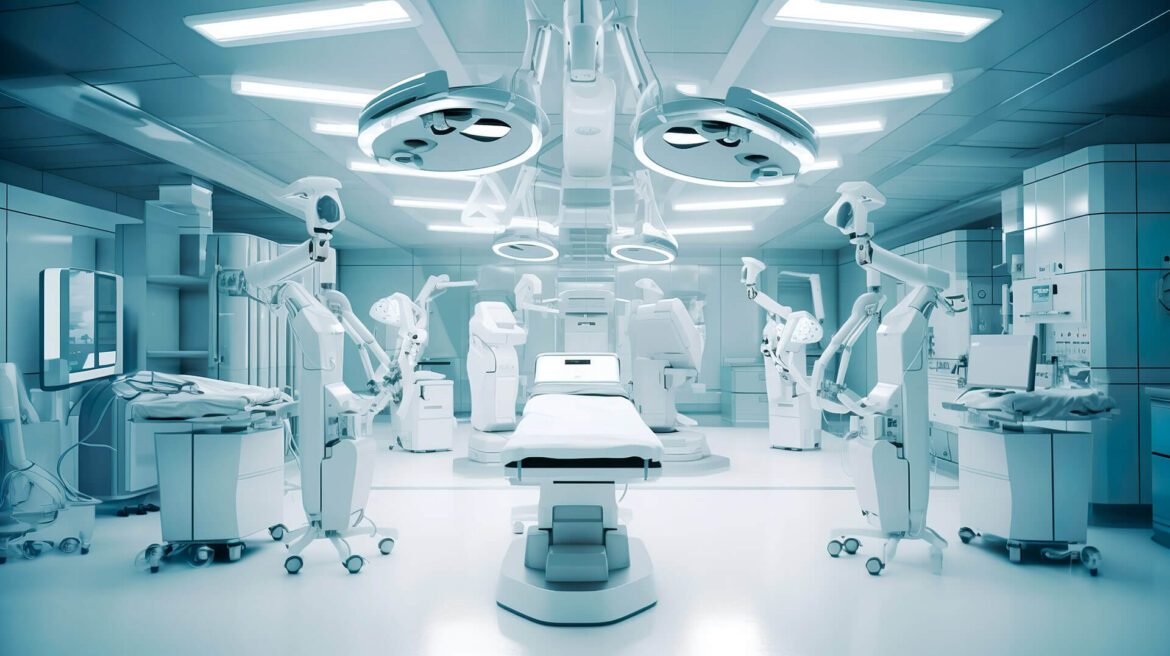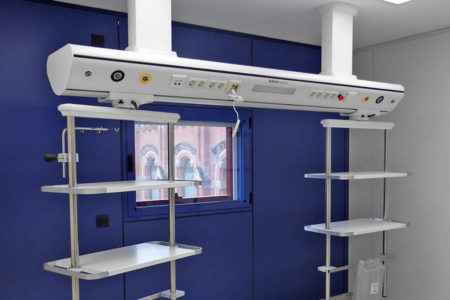Technology and ergonomics in operating rooms: an integrated approach to safety and efficiency
Ergonomics in operating room equipment is key to preventing injuries, improving efficiency, and promoting physician and patient safety.
The surgical environment is one of the most demanding and critical places in the area of medicine, with precision and efficiency being two cornerstones of the success of any medical procedure. In this context, ergonomics arises to adapt the work environment to the needs and capacities of health professionals, improving the design and operation of equipment in modern operating rooms.
Their goal is to improve comfort, prevent injury, increase efficiency, and promote safety for medical personnel and patients.

Innovative tools for smart operating rooms
When talking about ergonomics in operating rooms, aspects such as space distribution and control interfaces must be considered. Below we address some key elements in this matter.
Injury prevention and safety of medical personnel
Surgical procedures often involve long hours of work in uncomfortable and repetitive positions. This can lead to musculoskeletal disorders such as back, neck and hand injuries.
Applying ergonomics in the design of the operating room can significantly reduce this type of injury. Thus, among the most common measures are the adjustable height of surgical tables, the use of ergonomic seats or the strategic placement of equipment and supplies.
In addition, in terms of safety, ergonomics can contribute to reducing the risk of nosocomial infections, facilitating cleaning and disinfection of the surgical environment.

Efficiency and productivity in the operating room
A well-organized and designed operating room streamlines workflow, reduces time searching for equipment and supplies, and facilitates communication among the medical team.
On the other hand, the use of suitable ergonomic instruments improves the surgeon’s dexterity and precision, generating a positive impact on the results of surgeries.
For example, the proper arrangement of surgical lights and monitors provide optimal visibility. Likewise, the choice of ergonomic instruments such as forceps and scissors that adapt to the hand, improve dexterity and reduce the surgeon’s fatigue during an operation.
More safety and well-being for the patient
Ergonomics benefits medical staff and has an impact on the quality of patient care. When the medical team works in a comfortable and efficient environment, the margin for error is reduced and concentration and focus on the patient is improved.
The truth is that the less fatigued and more comfortable the health workers feel, the more alert and attentive to details they will be, reducing the risk of accidents and errors.

The most advanced technology
Ergonomics in operating room equipment is also based on the use of advanced technology and state-of-the-art medical equipment.
Ergonomic operating rooms are designed to efficiently integrate modern medical devices -such as Columns and Technical Panels-, taking advantage of technological advances to improve precision and safety in surgeries.
The Diamond glass panel, for example, centralizes all the necessary visual elements in an operating room or critical area. It is compatible with PACS, nursing station and software control. And Q Panel is our reference model in operating rooms, known for its Corian surface and its adaptability in terms of size and components.

DIAMOND – PREMO. Miranda de Ebro (SPAIN)
For its part, the Column suspended column optimizes space, guaranteeing a quick response for medical personnel and the patient, while the motorized system of the Motor Column Suspended Column ensures easy vertical movement.

COLUMN – Bless Clinic. Barcelona (SPAIN)
We can also highlight the Hermes control software, compatible with all our technical panels. It is the digital brain that allows centralizing all controls and obtaining data and analysis from the operating room or critical area.

QPANEL/HERMES – Hospital Txagorritxu. VITORIA (SPAIN)
In short, ergonomics in operating room equipment is essential to guarantee safety and efficiency in the surgical environment.
Preventing injuries to medical personnel and improving the precision of procedures makes all the difference in the outcome of surgery. For this reason, it is vital that hospitals and medical centers apply ergonomic principles in their operating rooms and have the latest medical equipment to provide a comfortable and safe working environment for professionals and improve the quality of care and patient safety.







